Imagine having to remove the oil pan to drain the oil from the engine in your car. This is the procedure you generally have to follow when changing the fluid inside the automatic transmissions of most cars made since the early 1970s.
There is no drain plug, to make it easy to drain the fluid.
Instead, it is difficult – and messy. Because there is no drain plug.
Like the oil pan, the transmission pan is held in place by about a dozen bolts that have to be removed before the pan can be lowered. But that’s not easy, either – especially if you’re laying on your back, underneath the car, trying to prevent it – and all the fluid it holds – from dumping out all over you . . . and all over the garage. There are about 4-5 quarts of oily, lubricious fluid in the pan – and by now some will have spilled and your hands will probably be soaked, along with your hair and clothes, too.
It is likely the pan will slip out of your hands as you attempt to lower it – and all of that fluid will be all over you.
This can be prevented (maybe, somewhat) by using a floor jack to – gently – support the pan while you remove the bolts and then – also gently – lower the jack while balancing the pan, which can then be tipped over into a large catch can, to catch all the fluid. Even so, it’s a hassle – and a mess.
Queuing up Church Lady (from ancient Saturday Night Live days) voice, could it be that the car companies don’t want you to change the fluid in your transmission?
Want you to go the dealer – to pay to have it changed?
Interestingly – conveniently – there are some new cars that come without engine oil drain plugs, too. The oil is not drained; it is sucked out – via a special probe that’s inserted into the oil fill tube. A tool the owner of the car probably doesn’t have.
Wonder why that is . . .
Some brands of cars require hooking up to a special computer that only the dealer has to change the battery. Hmmmm… could it be?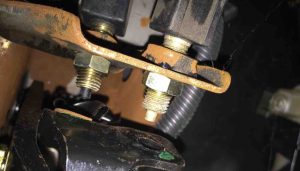
Ever try removing the hater core from a late model anything? Step one . . . remove the dashboard.
Another fun one – about which I’ve written in the past – is the little plastic stopper plug inserted into a hold drilled into the brake pedal of many late-model vehicles, including my Nissan Frontier pick-up truck. This rubber stopper causes a small pin inside a switch to be depressed when the brake pedal is released. This, in turn, completes an important circuit – the brake light circuit.
Inevitably, the rubber stopped ages – and shrinks. And falls out of its little hole. Resulting in the little pin not being depressed when the brake pedal is released. Causing the brake lights to stay on all the time. Including when the ignition is off. The fix is to either replace the plug or disconnect the battery whenever you have to leave the truck parked.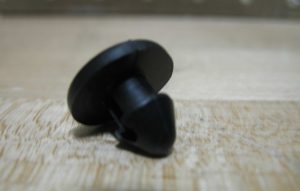
Guess which is easier to do . . .
Now, why would Nissan – and it’s not just Nissan – drill a hole in the clutch pedal and fill it with a rubber plug guaranteed to eventually fall out and which is exceedingly awkward to replace with a new plug? The procedure requires holding the brake pedal to the floor – so as to be able to see (and reach) the hold, in order to insert the new plug.
It takes gymnastics – and determination.
There are a few grateful exceptions to these practices. Subaru – name mentioned because praise is deserved – mounts the engine oil filter on top of the engine, where you can put your hands on it without having to lay on your back. It can be removed without using tools – other than your hands – and because it is mounted upside down, it does not make a mess when you remove it, as most of the oil within it has already drained back into the engine.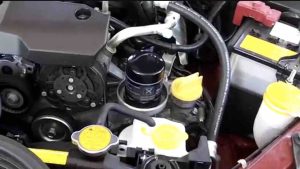
As opposed to all over the engine – as was the case, infamously, with the no-longer-made Cadillac “Northstar” V8 engine.
The oil filter was mounted up top, but very hard to reach and in such a way – at such an angle – as to all-but guarantee oil would spill all over the top of the engine, resulting in not just a mess but also smoke, as the heat from the running engine cooked off the mess.
Maybe I’ll get a drain plug kit – for next time!
. . .
Got a question about cars, bikes or anything else? Click on the “ask Eric” link and send ’em in! Or email me at EPeters952@yahoo.com if the @!** “ask Eric” button doesn’t work!
If you like what you’ve found here please consider supporting EPautos.
We depend on you to keep the wheels turning!
Our donate button is here.
If you prefer not to use PayPal, our mailing address is:
EPautos
721 Hummingbird Lane SE
Copper Hill, VA 24079
PS: Get an EPautos magnet or sticker or coaster in return for a $20 or more one-time donation or a $10 or more monthly recurring donation. (Please be sure to tell us you want a magnet or sticker or coaster – and also, provide an address, so we know where to mail the thing!)
My eBook about car buying (new and used) is also available for your favorite price – free! Click here. If that fails, email me at EPeters952@yahoo.com and I will send you a copy directly!


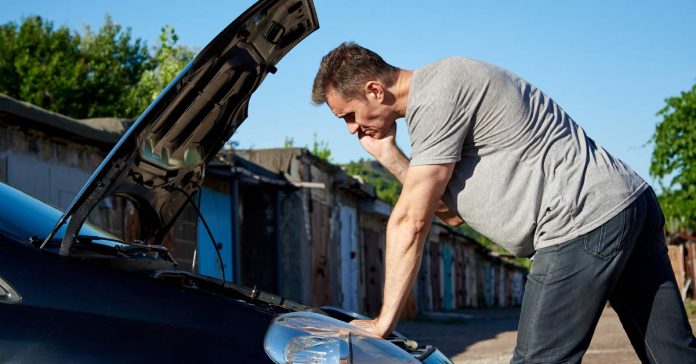









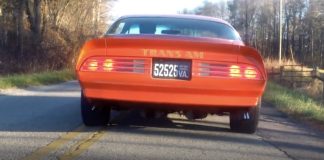
Unfortunately my daughters have a “cute” new beetle and a “cute” Audi A4 cabrio. They are both actually really nice cars to drive, but the “sealed for life” auto trans with the “check if it leaks to see if its full” drain plug scares the hell out of me. As well as Pentosin fluids at $40/LITER!!
I just did the routine timing belt service on the A4- not bad at all, a simple half hour job… after taking the whole front end of the car apart for 3 hours to get at it and 4 more hours to put together all those German plastic parts.
I sure miss being able to pull a Karmann Ghia engine in 20 minutes!
I must be an idiot here. I drive an 04 heavy duty pickup with a manual trans, and in fact, just had to pull it and have it rebuilt.
So I’m not completely ignorant. But i can’t figure why any vehicle would have the clutch pedal connected to the brake lights. What do the two have to do with each other?
That was my thought, too. Back in the day, before I was an old geezer and when I worked on my own cars, the “stop light switch” was operated by the braking system — hydraulically, I think, although I may be misremembering. If disengaging the clutch activates the brake lights, then every time the vehicle accelerates through the gears, each shift would flash the brake lights. That’s not something I see out in the world.
I wonder if Eric meant the brake hydraulic cylinder, and not the clutch?
Hi did – thanks, James, for catching that… insomnia does strange things to the mind!
I bet it will be a long time indeed before I catch another error here. You da man!
Thanks, again!
I really appreciate you guys having my back!
Ah, that makes more sense.
You mentioned it was the case on manual trans vehicles: is the brake light switch system different on manual vs auto vehicles?
Freaking Audi claims their transmissions are good for life! For… “life”. That is, *their* (Audi USA’s) expectation of “life” of the car. Apparently that is for the length of the now-truncated 4 year original warranty. Used to be 5 year. I think it’s also now 40K miles instead of 50K for the “which ever comes first” deal.
But, in any case, if you go to Audi and ask for them to service your transmission, they will refuse! I’m pretty sure, if you get someone else to do it during your warranty period, that will void your warranty.
Kind of bullshit TBH.
I have done two trans pan filter changes. First on a 80s K-car (Dodge/Chrysler) and the other on a 1987 6 cylinder Olds I think. The 87 was the first year with front wheel drive. I bought the car with 80 thousand miles from a neighbor. The car would not shift out of 1st. I removed the pan and replaced the filter. You should see the sludge in the pan. Anyway after I did that the car shifted like new. A mechanic near me would do the job for $150. I paid ten dollars for the filter and 6 dollars for the fluid.
The car was stolen from the front of my house a few months later, never to be found. This is Chit***go in the nicer part of town.
My 2014 Mazda3 has a “sealed for life” transmission, which worries me. From what I can tell, it is possible to drain about half of the fluid out with a lot of work. Some do that, refill with new fluid, drive a few miles, drain it out again, refill again, etc. in an attempt to “replace” with all new fluid. Dilution is the solution, sadly.
Hi Gary,
This is essentially how it is with all modern automatics; a fluid change usually means just changing the fluid in the pan – i.e., some of the fluid – because there is still plenty of old fluid in the torque converter/cooler/lines and so on. It’s why I change the fluid more often – as clean fluid is critical to automatic transmission longeity.
The old Torqueflites had a separate torque converter drain plug; you had to remove the access cover on the underside and rotate the engine to get to it. The entire “theory” behind the “no drain plug” was that if your automatic transmission fluid needed to be changed, so did the filter, so why bother installing a drain plug? Maybe saved two bucks on each vehicle, but multiply that by Mopar putting out maybe a MILLION every year, and well, you can see the “why”.
The need to do regular fluid changes on automatics has gone back and forth ever since they came out. There was a time in the 1960s where car makers were saying that under “normal” service the fluid didn’t need to be changed at all. Admitted, those GM Turbo Hydramatic 350 and 400s, Ford C6s, and Mopar A727s were “bulletproof”. But what, pray tells, was “normal”? And most cars were “done” anyway after about 7-8 years and 100,000 miles, with warranty periods much less than that. The trouble was, already an automatic was something that even experienced mechanics couldn’t begin to fix, as a competent rebuild required special tools and testing equipment. Most of the chain shops like AAMCO rarely rebuilt your ailing box in the shop, they sold you a rebuilt with a limited warranty. And, of course, so many were caught “misdiagnosing” expensive rebuilt unit swaps when only a fluid/filter change was needed, or even a vacuum modulator line was loose! This reached its head in the late 1980s and into the 1990s with the Chrysler “Ultradrive”, or A604 (or 41TE) units for their V6 FWD applications; these “computer” controlled boxes gave Mopar a bad reputation, although in the majority of the cases, there was nothing mechanically wrong with the unit! Most of the issues were “cured” by development of ATF+4 fluid, the “purple” stuff, which the engineers had initially recommended (actually, its earlier derivative, ATF+3, which was a bit more viscous) instead of the GM Dexron II long-used in RWD Torqueflites, but Chrysler nixed that on the grounds that it was twice as expensive per car…they were hesitant to spend about 12 dollars more for the transmission fluid at the factory, I kid you not!
If I’m not mistaken, again, do some shops not flush them out through the cooling lines?
So many nudges to get the average person with more dollars than mechanical sense to (just buy another one.)
– The “sealed transmission designed to last the life of the car.” (Whatever that means) The Oldmosbile Alero had this.
– Ford powerstokes: When the fuel injectors inevitably go bad you have to remove the cab to get to the ones nearest the firewall. A friend had quotesfor $7500-$9000 to change injectors on his 2002 f-250. He did it himself. The truck was off the road for a month. However he had a shop the size of a small aircraft hangar and more tools that the average professional mechanic. Most people would have let the truck go and bought another.
The 300-$500 dollar headlight assembly instead of a a headlamp that costs a few dollars. $500-$1000 dollar heated electric mirrors instead of a piece of glass that can be easily and inexpensively replaced.
Working on cars has become more nightmarish than its worth sometimes. I like tinkering, getting my hands dirty, and the satisfaction of repairing my own machines. I get to know my vehicles pretty well as I keep usually them until they are no longer repairable.
I dont know how many more years I’ll be saying that or even have the ability to work on my own stuff the way car designs are devolving.
Amen, Sicilian!
And what is the benefit to the owner of all this increased complexity, in terms of meaningful improvement? I have owned two iterations of the same basic truck, a ’98 Nissan Frontier and my current ’02 model. The ’98 had sealed beam headlights that cost $25 to replace. The new one has plastic “assemblies” that Nissan charged four times as much for, each.
I may be mistaken, but I think on the 2nd gen frontier, you have to remove the bumper to change the headlight assembly (not the bulb). Sweet. So when the headlights get so yellow you can’t buff ’em up anymore, with the asemblies at 3-400 each, and all that extra labor, probably looking at a thousand dollars to replace them.
And I thought the ’75-’77 Chevy Monza 2+2 with the 262 V8 (as if the Vega four-banger wasn’t bad enough!), with the need to loosen the ENGINE MOUNTS and jack up the engine two inches in order to expose the rear-most spark plugs was an example of nightmare maintenance!
About 20 or so years ago, I had two Mopars, one with the 3.3. liter V6, the other with the 3.8, both OHV “grocery getter engines”. The former was in a 1991 Chrysler New Yorker Fifth Avenue, one that I later gave to my oldest son, it had plenty of leg room in the back and was VERY plush with that blue velour; he and his friends dubbed it “The Shaggin’ Wagon”. I did the spark plugs at least once that I recall; you had to remove the intake plenum and throttle linkage and MAF sensor wiring to get to the rear bank; but beyond that it was a fairly roomy engne bay. The latter was a ’98 Chrysler Town and Country minivan. I had to do the plug change, and that was a NIGHTMARE, as you had to not only yank the plenum and assorted linkage and wiring’ but also had to remove the windshield cowl and the wiper arms. Fortunately it was a 50K mile event, so not the end of the world; but just for “shits and giggles” I asked a reputable shop that’d helped diagnose a problem on the Fifth Avenue for a “tune-up” and was quoted, in 2003, $800! I don’t even WANT to think of what similar maintenance on my 2020 Fusion will run!
Do you think this is linked to the near disappearance of the traditional work truck (roll-up windows, manual everything, basic drivetrain)? Those seemed to go practically forever with basic, operator level maintenance.
Hi Bama,
I think it’s related. Simplicity/efficiency/economy began to wane noticeably in favor of complexity/cost/”technology” beginning in the early 2000s, which dovetails with the car having matured as a technology and government regulations becoming increasingly onerous. I hope when all this is over we can rebuild qlong the lines of simplicity and efficiency, again.
That’s WHY. The auto makers don’t WANT you to keep it running “For-Ev-Uhr” (ala “The Sandbox”). Neither does the Gubmint nor the Insurance Mafia, they believe the old work truck, should you get in a terrible collision with it, is a liability nightmare for THEM in the offing. The “Gubmint”, of course, wants the taxes generated from this unnecessary “churning” of economic activity, caused in part by their regulating the old iron into oblivion.
Pity, Indeed, an old pickup, well-maintained, has its own “beauty”. Why do I need a $90K “Cowboy Cadillac” to haul around equipment, or sacks of concrete mix? I should be able to leave a job site, my boots caked in mud, and just DRIVE, and sweep out the cab as needed.
To be fair, I can see the reasoning for no drain plug on an automatic- as one really needs to change the filter in there too, which of course requires the removal of the pan- plus, there can be things living in that pan that could clog a drain hole; and considering the long intervals between fluid changes…….
Then again, if serviceability and longevity were a goal, I’d bet they could make an automatic with an external filter, like on a tractor, which would make a drain plug much more feasible- maybe a drain port- a larger opening secured with a cover held on with a few screws and a gasket, so as to let any funky stuff out.
Morning, Nunz!
It’s a fair point – in re the filter. Still, it makes getting the filter out a much messier ordeal than it needs to be. Drain the fluid – via a drain plug – and then it’s easy (and not messy) to drop the pan and get at the filter.
By the way, I just did mine – as part of a general “getting ready” – for parts unavailability and unaffordability. I realize it won’t tide me through forever. But maybe I can keep the Orange Barchetta operational for awhile longer…
Another potential for eliminating the trans drain plug was partly due to the fact that ‘new’ shade tree mechanics often mistook it for the engine oil plug. I know several people that did it. Damaged trans and the engine (cause they added 5 more quarts). Then the owners were mega pissed at the manuf.
On HD trans like the Allison, there is a outside spin on filter (and a drain plug).
Good point, Eric! Sometimes, I overlook the obvious…..
Me too, Nunz!
We are, after all only human!
How much can a few quarts of Dexron II and a new Delco tranny filter cost? Buy a new set and STORE it. For all you know, Eric, SHTF, and a LOT of things we take for granted to run down to Autozone or NAPA, or have “A-Maze-On” (Amazon) drop off, might NOT be available all that easily, the way the senile old goofball at 1600 Pennsylvania Ave in DC is running things (into the ground).
Hi Doug,
Yup. I just ordered ZDDP oil for the TA. It’s cripplingly expensive but the TA needs to be brought up to battle ready (and storage ready) condition. The bikes, too.
I’ve been recommending that people obtain necessary supplies while they can.
I never change the filter, just the fluid. I do err on the side of changing the fluid more often.
Never had any transmission issues, even at high mileage.
Current vehicle has a manual gearbox, do those even have filters?
No. No filter in a manual, a.k.a. a ‘real transmission’. (You lucky so-and-so!) 😀
Do change the filter in an automatic when you change the fluid though, ’cause if the filter is gunked-up and contaminated it’ll largely negate most of the benefit of changing the fluid if you leave the old filter in there.
Well Nunz, funny you mention external AT fluid filters. Our former 99 Subaru Legacy had a Jatco 4EAT auto, and it had a spin-on external filter. It also had easily accessible fill and drain ports on the AT, front diff, and rear diff, a dipstick for the AT, and another for the front diff. Now that was thinking ahead for the maintenance tech and his needs!
And as for AT fluid drains…the Aisin 09G 6-speed slushbox on some VW’s (and the older 01M 4-speed slushbox on earlier ones) has a drain plug. It is also a fill plug, and a level check port. It is on the bottom of the pan. Hmmm, how does one drain, fill, and check level from the bottom of the pan? It has a removeable standpipe in the drain plug opening, which allows a trickle of fluid when the trans is in park with the engine running, and within a specified temperature range. Does that sound like a fun way to check trans fluid level? Yeah, it is as fun as it sounds. Filling is done by screwing a filler doodad into the same drain port, and pushing 4-5 quarts of fluid up into the trans. Even MORE fun than checking with the drain port, it is! I would like to find the Teutonic Twat that designed that, and sing him a 5-minute-long 4-letter aria worthy of a USAF CMSgt!
Ok my post disappeared, must be Putin’s fault 😆
Hi Mike,
I just replied to it!
Loved working on my 75 Dodge with the 225 slant six, you could practically sit inside the engine compartment anf the oil filter, plugs and distributor all easily accessible. Nowadays you can barely fit a piece of paper between components.
Amen, Mike –
My ’76 Trans-Am is like that. I can remove/replace all eight plugs in 15 minutes; of course, I also know this car better than I know my own smell!
Had a 67 Dodge pickup with a 225 that you could raise the hood to the straight up position, and LITERALLY sit inside the engine compartment. You didn’t have to remove the hood to change the engine out. I once changed the water pump in an hour. On a job site. With a crescent wrench. Cars and trucks were never designed to be worked on. They were designed to be assembled. As tech used for assembly parted ever further from tech used to work on them, and computer created layout allowed extreme space utilization, working on them got harder. Ludicrously harder. Have to disconnect motor mounts and jack up the engine to change spark plugs? Really?
RE: “I once changed the water pump in an hour. On a job site. With a crescent wrench.”
THAT, is amazing!
I am now looking at technology/advancements slightly differently. Things should be easier to repair, and trending towards even easier, not the other way around.
reminds me, back in the day when Honda was getting very popular in the 70-80’s, they had teething problems, like their water pumps went early and often. we did so many of them at the shop I worked at part time, that since I was young and crazy, I created a shop ‘competition’ on who could do a honda water pump the fastest. We had a lot of fun with it. Average was 7-8 minutes. I had the record at 5 1/2 minutes. haha…..
So then I wanted to do the same with a timing belt competition but the shop owner put a halt to it since the downside if we made a mistake was much higher.
That’s my kind of fun, too, Chris!
I bet I could remove the Quadrajet from my TA in three minutes, with my eyes closed…
i’m gonna bust ya on that one. Because you have too!, hahaha 🙂
if ya had efi, ya wouldn’t have too. The aftermarket units are killer from the name brands.
I know ‘you like it’. so do I, but I like riding/driving more now.
Just a little jabbing.
Indeed, Chris!
But – remember – EFI will never deliver the Quadrajet Moan….
so true……………
Hey M+I+B!
My first car was a ’74 Plymouth with the Slant-Six (Yeah, I was a very practical kid!). Boring car, but I LOVED the utter simplicity of it! I just hated the sound of those Slant Sixes; it could make a boner subside!
The same Nunz, too bad it rusted out so quickly but the engine was reliable.
Those engines had heavier main bearings than most V8s. They qualify for diesel. My auto mechanic father and I rebuilt one (mostly dad), and it wore out 3 used cars before I abandoned it. It still ran, I just got tired running down used MOPARs and swapping engines. And tired of used MOPARs. God knows how many miles.
The main bearings were the same size as their big block “B” engines (361, 383, 400, 413, 426, and 440). The engine casting was meant for either iron or aluminum, the originally plan was to have an iron “truck” engine and the “car” version would be the aluminum. These two factors made for one BEEFY block and crank. FWIW, Chrysler engineers actually made prototypes based on this engine of OHC Sixes (like the 1960s Pontiac Six), a V12 (combining two Slant Six blocks), and even a DIESEL Six.
Chrysler also developed but never used for USA production a more “conventional” straight six, except with semi-hemispherical combustion chambers, like their Series A “Poly” engines, aka the “Canadian 318”, as that engine foundry was in Windsor, Ontario. The tooling was sent to their Australia subsidiary which used it in their Chrysler Australia vehicles, known as the “Hemi Six”. As fewer Aussie buyers chose V8s in their rides, more performance options were available for this Six. As one fan put it, the engines had “more ‘grunt’ than a yard full of pigs!”
Morning, Doug!
I’ve always been intrigued by Pontiac’s short-lived OHC inline six of the late 1960s. As you probably know, this engine was offered in “Sprint” form, with a Quadrajet four barrel and some other upgrades, in the Firebird. A neat, high-revving engine that was largely overlooked at the time because V8s were “it” in American performance cars. Pontiac – like Chrysler – was doing some pretty amazing engineering work in those days…
My ‘75 Dodge with the slant six had the oil filter up top, along with easy access to the plugs and distributor. It did spill a fair amount of oil over the engine as I remember unless you could spin it off really fast. Other than that it was an easy engine to work on, you could practically sit inside the engine compartment it was so roomy. Quite the contrast to modern cars where you can barely fit a piece of paper between components.
I had a 70’s Dodge (Dart?) with a slant six. It certainly was easy to work on & like you wrote, “you could practically sit inside the engine compartment it was so roomy.”
First & only car I ever had that was like that. I kinda miss it.
So unlike my 90’s Firebird, man, I could barely get the spark plugs out, the space was that tight.
Hi Helot,
If I recall correctly, those fourth generation Camaros/Firebirds had their engines loaded from below at the factory – and they were recessed in the engine compartment such that accessing the plugs (and other things) was rotsa fun, as Bugs Bunny used to say (before cartoons became Woke)!
I had a few Darts with the Slant Six when I was young. While getting to the carb, heat riser, fan belt, spark plugs was dirt-simple, doing anything on the passenger side of that engine, given that it did slant 30 degrees to the passenger side, was a tad challenging for adjusting or replacing “points” (remember them?). The solution was to stock up on some 1″ O-rings (they were neoprene and any Carquest or NAPA auto parts store had them in the “Dorman” section), you just got the engine to Number 1 TDC (usually done with a plug change and valve adjustment, so it was easily to verify that you weren’t 180 degree “out”, you also checked the rotor position anyway). The distributor came out easily and you just did the points replacement and set the gap on the bench and reinstalled it. Since you had to re-time the engine anyway, easier than screwing with getting the rotor correctly position and leaning over down there and fiddling around with a feeler gauge!
Doing an oil change wasn’t that bad, but since the filter stood “up”, it’d splash oil over the K-member and torsion bar below, so you always used a few rags and a wide oil pan to catch the mess and clean it all up. The one thing I didn’t like about that arrangement was that it limited how much oil you could put into the filter prior to installation; to avoid a “dry startup”.
Typos…